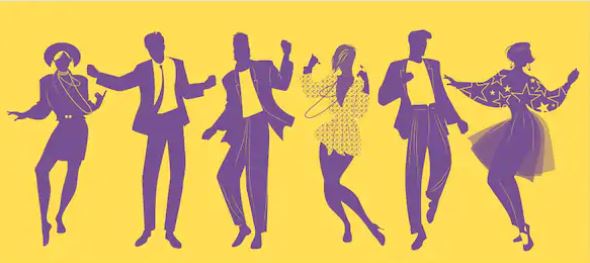The Roots and History of Dance
Dance has been a part of human culture for thousands of years. In fact, it can be traced back to 9,000 years ago in cave paintings located in India. However, it did not always serve the same purpose as it does today. Dance historically served as a way to celebrate significant rituals in cultures worldwide. Since it has had such an important role throughout history, it is important to understand its origins and various changes over time. In order to learn more about the roots and history of dance, review the information below:
The ritual
The earliest traces of dance can be seen in a ritual setting. Since writing was not as developed as it is today, it was used as one of the earliest forms of expression and celebration in ancient civilisations. Various types of dance originated in ancient cultures. For example, the prehistoric Egyptians used it for performances along with symbolic ceremonies. Individuals from India utilised it regularly in their rituals and mythology. Similar use of dance can be seen in Mesoamerican cultures along with the Mesopotamians, Phoenicians, Greeks, and Romans.
Performing in front of the public
Due to the integration of theatre and performance in Ancient Greece, dance began to evolve into a different role in society. Granted, it was still applied in rituals. However, it started to be used as a performance to amuse the public with the growth of theatre in Ancient Greek society. The idea to covert dance into a performance role was not in Ancient Greece alone. It also began to evolve into concerts in India as well. Dance was also used to convey meaning behind religion and tradition. This created a sector that invited audiences to interpret the true meaning of the movements. These ideas formed both from the Ancient Greeks and Indian societies still are integrated in modern viewpoints on how dance is viewed today.

Creation of the different types of dance
As dance was initiated to evolve over the years, different countries and cultures started to create their own types of it, which were embraced by the local citizens. Some modern examples of dances that were involved by particular cultures are – Flamenco, Waltz, Salsa, Tango, Merengue, among others. A dramatic alteration over the years has been assimilating, and dancing is being used as a form of exercise rather than entertainment. This, combined with the drastic change in musical influence, has greatly changed how dance is portrayed in different parts of the world today.
Concluding remarks
Dance has inspired humans from all nations around the globe for thousands of years. Even though the nature of how it has been integrated in society has dramatically shifted over the years, dance remains an important respected institution. Today, it is fascinating to compare the different styles and which cultures they originated from throughout history.
If you want to dance as a professional and learn from the best, Global Dance Pro have the best team. They will prepare you to be career ready! Dance is an ever-evolving industry. Styles and choreography change and advance so rapidly, which is why we take you to LA – to train with the world’s best teachers at LA’s leading dance institutions, Edge Performing Arts Centre, Millennium and Playground. All you need to do from here is register your interest here. One of the GDP team members will be in-touch with you soon after.
LIMITED SPOTS ARE AVAILABLE, SO BE QUICK!
